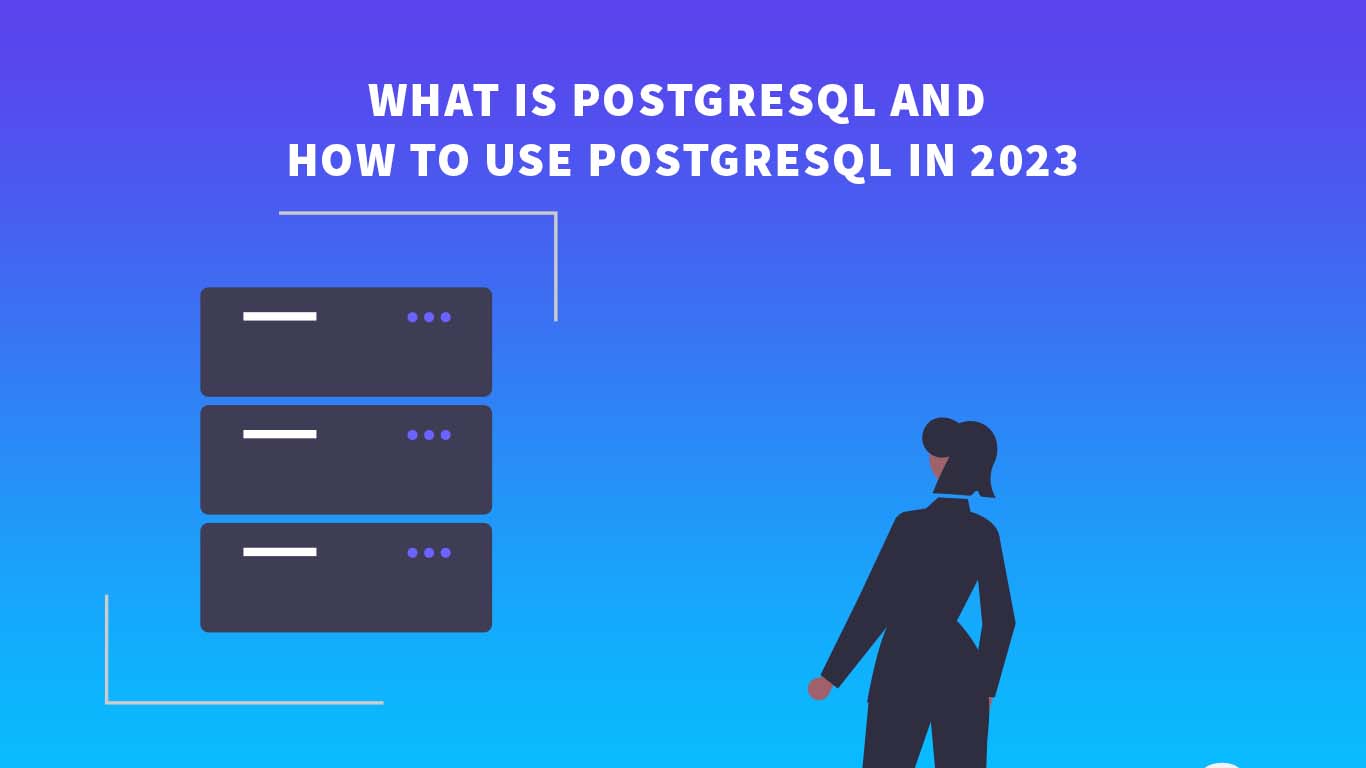PostgreSQL Introduction
PostgreSQL is an open-source relational database management system (RDBMS) that is used to store, organize and manage large amounts of data. It is a powerful tool that is widely used by developers, data scientists and organizations to manage data effectively. In this article, we will explore PostgreSQL, its features, and how it can be used.
What is PostgreSQL?
PostgreSQL is a powerful open-source relational database management system. It is one of the most popular and widely used databases in the world, with millions of users around the globe. It is known for its high performance, reliability, scalability, and robustness. PostgreSQL is designed to be flexible, customizable, and easy to use. It can handle large amounts of data, and it supports a wide range of data types, including text, numbers, dates, time, and more.
PostgreSQL is also known for its advanced features, such as full-text search, transactions, and data integrity. It is a highly extensible system, with a large number of add-ons and plugins available to customize and enhance its functionality. It is also known for its security features, which include SSL support, encrypted connections, and user authentication.
Features of PostgreSQL
PostgreSQL has a number of features that make it one of the most popular and widely used databases in the world. Some of its key features include:
- Reliability: PostgreSQL is known for its reliability and durability. It uses a write-ahead logging (WAL) system that ensures that data is not lost in the event of a system failure. It also has a robust error handling system that can recover from errors without losing data.
- Scalability: PostgreSQL is designed to be highly scalable. It can handle large amounts of data and can support thousands of concurrent users. It can also be clustered for even greater scalability.
- Performance: PostgreSQL is known for its high performance. It uses a multi-process architecture that allows it to handle large amounts of data quickly and efficiently. It also has advanced query optimization features that help to improve performance.
- Extensibility: PostgreSQL is highly extensible. It has a large number of add-ons and plugins available that can be used to customize and enhance its functionality.
- Security: PostgreSQL is known for its security features. It supports SSL connections, encrypted data, and user authentication.
- Transactions: PostgreSQL supports transactions, which allow multiple database operations to be grouped together into a single atomic transaction. This ensures that data is consistent and reliable.
- Replication: PostgreSQL supports replication, which allows data to be replicated across multiple servers for increased reliability and availability.
How to Install PostgreSQL in 2023
Installing PostgreSQL in 2023 is a straightforward process, and there are many different ways to do it depending on your operating system and preferences. In this article, we will provide a step-by-step guide on how to install PostgreSQL on popular operating systems such as Windows, macOS, and Linux.
Windows
Step 1: Download PostgreSQL First, download the PostgreSQL installer from the official website. Make sure to choose the appropriate version for your operating system and architecture.
Step 2: Install PostgreSQL Double-click the downloaded installer file to launch the installation wizard. Follow the instructions provided by the installer, and make sure to select the necessary components, such as the server and the command-line tools.
Step 3: Configure PostgreSQL During the installation process, you will be asked to configure the PostgreSQL server. You can choose the default settings or customize them according to your needs. For example, you can specify the port number, the data directory, and the password for the postgres superuser.
Step 4: Start PostgreSQL After the installation is complete, you can start the PostgreSQL server by opening the pgAdmin tool or the command prompt and running the following command:
pg_ctl start -D "C:\Program Files\PostgreSQL\version\data"
Replace “version” with the version number of the PostgreSQL installation.
macOS
Step 1: Install Homebrew Homebrew is a popular package manager for macOS, and it can be used to install PostgreSQL. To install Homebrew, open the Terminal app and run the following command:
/bin/bash -c "$(curl -fsSL https://raw.githubusercontent.com/Homebrew/install/HEAD/install.sh)"
Step 2: Install PostgreSQL Once Homebrew is installed, you can use it to install PostgreSQL by running the following command in the Terminal:
brew install postgresql
Step 3: Start PostgreSQL After the installation is complete, you can start the PostgreSQL server by running the following command in the Terminal:
brew services start postgresql
Linux
Step 1: Install PostgreSQL The method for installing PostgreSQL on Linux varies depending on the distribution you are using. For example, on Ubuntu and Debian, you can install PostgreSQL by running the following command in the Terminal:
sudo apt-get install postgresql
On CentOS and Fedora, you can install PostgreSQL by running the following command in the Terminal:
sudo yum install postgresql-server
Step 2: Start PostgreSQL After the installation is complete, you can start the PostgreSQL server by running the following command in the Terminal:
sudo systemctl start postgresql
You can also enable the PostgreSQL server to start automatically at boot time by running the following command:
sudo systemctl enable postgresql
In conclusion, installing PostgreSQL in 2023 is a simple process, and there are many different methods to choose from depending on your operating system and preferences. By following the steps outlined in this article, you can install PostgreSQL and start managing your databases with ease.
How to use PostgreSQL in 2023?
PostgreSQL is a powerful open-source relational database management system that can be used to manage large amounts of data. In 2023, PostgreSQL continues to be one of the most popular databases in the world, with many new features and enhancements being added every year. In this article, we will show you how to use PostgreSQL in 2023 with examples.
Step 1: Install PostgreSQL The first step to using PostgreSQL in 2023 is to install it on your machine. You can download the latest version of PostgreSQL from the official website. The installation process is usually straightforward and can be completed in a few minutes.
Step 2: Create a database After installing PostgreSQL, you can create a new database using the command line interface or a graphical user interface. In 2023, there are many tools available to help you manage your PostgreSQL databases, such as pgAdmin and DBeaver. These tools allow you to create, manage and query your databases with ease.
For example, to create a new database using pgAdmin in 2023, follow these steps:
- Open pgAdmin and connect to your PostgreSQL server.
- Right-click on the “Databases” node and select “Create > Database”.
- Enter a name for your new database and select the owner for the database.
- Click “Save” to create the database.
Step 3: Connect to the database Once you have created your database, you can connect to it using a client like psql or a graphical user interface. In 2023, many new PostgreSQL clients have been developed that offer improved functionality and usability.
For example, to connect to your PostgreSQL database using DBeaver in 2023, follow these steps:
- Open DBeaver and click on “New Connection”.
- Select “PostgreSQL” as the database type and enter the connection details (host, port, database name, username, and password).
- Click “Test Connection” to verify that the connection is working.
- Click “Finish” to save the connection details.
Step 4: Create tables After connecting to your database, you can create tables to store your data. You can define the columns and data types for each table. In 2023, PostgreSQL supports many new data types and table features that make it even more flexible and powerful.
For example, to create a new table in your PostgreSQL database using SQL in 2023, you can use the following command:
CREATE TABLE users (
id SERIAL PRIMARY KEY,
name VARCHAR(50),
email VARCHAR(50),
created_at TIMESTAMP DEFAULT NOW()
);
This command creates a new table called “users” with four columns: “id”, “name”, “email”, and “created_at”. The “id” column is a serial primary key, which means that PostgreSQL will automatically generate a unique value for this column for each new row inserted into the table. The “name” and “email” columns are both VARCHAR(50), which means that they can store up to 50 characters. The “created_at” column is a TIMESTAMP column with a default value of the current timestamp.
Step 5: Insert data Once your tables are created, you can insert data into them. You can do this using SQL commands or a graphical user interface. In 2023, many new tools and frameworks have been developed that make it easier to insert and manage data in your PostgreSQL database.
For example, to insert a new row into the “users” table in your PostgreSQL database using SQL in 2023, you can use the following command:
INSERT INTO users (name, email) VALUES ('John Doe', '[email protected]');
This command inserts a new row into the “users” table with the values “John Doe” and “[email protected]” for the “name” and “email” columns, respectively. The “id” and “created_at” columns will be automatically populated by PostgreSQL.
Step 6: Query data After inserting data into your tables, you can query the data using SQL commands or a graphical user interface. In 2023, many new query tools and frameworks have been developed that offer improved performance and functionality.
For example, to query the data in the “users” table in your PostgreSQL database using SQL in 2023, you can use the following command:
SELECT * FROM users;
This command retrieves all the data from the “users” table and displays it in a tabular format. You can also filter the data using various SQL operators, such as WHERE, AND, OR, and ORDER BY.
Step 7: Manage indexes Indexes can be used to improve the performance of your queries by speeding up data retrieval. In 2023, PostgreSQL supports many new index types and features that make it even more efficient and powerful.
For example, to create an index on the “email” column of the “users” table in your PostgreSQL database using SQL in 2023, you can use the following command:
CREATE INDEX email_index ON users (email);
This command creates a new index called “email_index” on the “email” column of the “users” table. This index will speed up queries that involve searching for data based on the “email” column.
Step 8: Backup and restore It is essential to backup your PostgreSQL databases regularly to prevent data loss in case of system failure or other disasters. In 2023, many new backup and restore tools and frameworks have been developed that make it easier to backup and restore your PostgreSQL databases.
For example, to backup your PostgreSQL database using pg_dump in 2023, you can use the following command:
pg_dump -U username -h hostname -F c -b -v -f /path/to/backup.dump databasename
This command creates a backup of the “databasename” database and saves it to a file called “backup.dump” in the specified directory. You can restore this backup using the pg_restore command.
Step 9: Security Security is essential when managing databases, and PostgreSQL offers many features to ensure the security of your data. In 2023, PostgreSQL supports many new security features, such as encryption and role-based access control.
For example, to create a new user in your PostgreSQL database using SQL in 2023, you can use the following command:
CREATE USER newuser WITH PASSWORD 'password';
This command creates a new user called “newuser” with the password “password”. You can then grant this user specific privileges using the GRANT command.
Conclusion
In conclusion, PostgreSQL is a powerful and reliable open-source database management system that continues to evolve and improve in 2023. With many new features and enhancements, PostgreSQL remains one of the most popular databases in the world. By following the steps outlined in this article, you can get started with using PostgreSQL and managing your data with ease.


